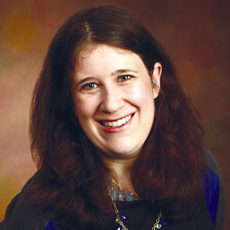
There are many parts of attending annual big conferences that I love, from seeing old industry friends to attending good sessions. But I also, not so secretly, love the exhibit halls.
For one, it’s where McKnight’s editorial staff can connect with readers, whether it’s telling an administrator he or she can receive a new subscription or asking for feedback on what is working. But I also love the energy from vendors, many of whom are legitimately excited about their new products.
The flip side of that, however, is that it can be overwhelming for providers to know what they need, or how they will use it. In the context of a multi-day affair like the American Health Care Association/National Center for Assisted Living conference or LeadingAge’s convention (both coming up in October), it’s not surprising if people shopping for technology products wants to throw up their hands at the end.
That’s why I think LeadingAge’s Center for Aging Services Technologies (CAST) provides a valuable service in its selection tools, specifically in its Electronic Health Record portfolio released last week. (One for telehealth was released earlier this year, and one on medication management is slated for the fall).
One of the issues on many minds of administrators is interoperability, a point hammered in the Long-Term and Post-Acute Care HIT Summit in June. “We get asked, frequently, by members whether an EHR offers an integrated component for billing, for HR management and for time and attendance,” said Majd Alwan, senior vice president of technology at LeadingAge and executive director of CAST. Providers can choose to have only integrated systems shown, or filter to see EHRs that have the ability to interface with third-party finance, HR or ancillary vendors.”
Another topic on the mind of providers, of course, is the ability to look at analytics. There are two philosophies on this: One, that providers generally have the data that they need, specifically raw numbers, but they have to figure out how to pull it and use it. The other is that providers have a finite amount of data, and need an outside consultant or group to find information about outside sources.
Alwan says there is some truth to both schools of thought.
“Providers who have an EHR can take a really hard look at what they collect and why they collect it,” he said. “However, in a category such as readmission rates, they may know the readmissions of their own facility but not in the cases of outside home health agencies. Or claims data may be outdated by up to a year. Providers may want reviews of MDS or Oasis and see benchmarking based on more recent data.”
Other additions include detailed information about ICD-9 and ICD-10 coding capability, a topic on many people’s minds as the 2015 deadline looms.
Alwan says CAST’s tools will continue to evolve in response to the market. He also wants to hear from providers about what is working.
“We greatly appreciate feedback not only on how we should update but also if we should be doing something similar for another technology category,” he said.
The LeadingAge annual meeting and exhibition will occur October 19-22 in Nashville.
Elizabeth Newman is the Senior Editor at McKnight’s. Follow her @TigerELN.



